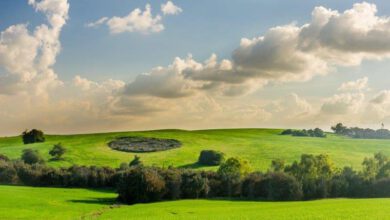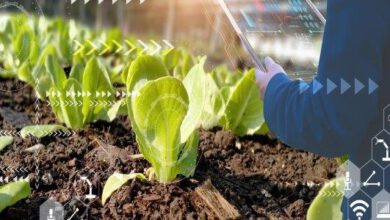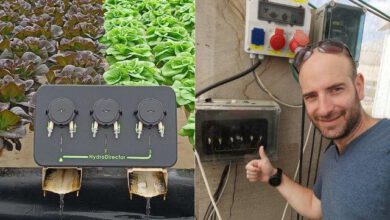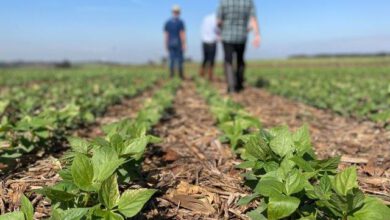The Frontline of Precise Agriculture for the Benefit of Farmers Worldwide
Farmers are enjoying precise agriculture supported by NaanDanJain and the Jain International Group
An interview with Mr. Maoz Aviv, head agronomist at NaanDanJain and manager of the agro-tech division


In recent years, there has been an increasing number of forecasts of a world food crisis by 2050. This prediction has led agriculturists to advance and adopt innovative technologies in order to maximize the use of existing resources, and to save the world from a fate of hunger and starvation.
Aside from the more common difficulties that farmers face, such as an increase in pests or a year of drought, the global warming process has resulted in an additional problem—a lack of climatic stability. Extreme heat and cold waves destroy entire crops.
The world water crisis has worsened since the 1970s, causing tremendous agricultural crop loss due to insufficient water reservoirs for irrigation. The shortage of manpower further adds to the crisis, resulting in higher employment expenses. All these factors cause inflated costs of the growing process, increased food prices, and instability of food supply.
Thus, contemporary agriculture faces a dilemma—’to progress or to quit’. To ‘progress’ means urgently adopting the most modern technology existing on the market, and entering an era of ag-tech, a term relating to the entire technological agriculture industry. Farmers of all ages understand that using modern technology not only helps to exploit reduced agricultural resources, namely water, fields and manpower. It also increases yields, saving agricultural expenses and enabling the reduction of produce waste to just a few percent.
In recent years, more and more agricultural fields are being monitored technologically with thermal cameras, sensors, drones, satellite images, multi-rotors, and probes. All of these gather and transmit data 24 hours a day, sending it directly to the farmer. The farmer can therefore make immediate decisions and carry them out directly from the device in hand, without needing to be in the field. The result is extremely quick response time by the farmer, which minimizes agricultural damage during extreme weather conditions. In addition, it facilitates decision-making based on real data at any given moment, which assists in maximizing agricultural yields.
Mechanization reduces long work hours in agricultural plots, makes work more efficient and lessens growing costs. Modern irrigation systems enable precise irrigation of the field or orchard, down to the level of the single plot or tree, thus preventing the waste of water, fertilizers and the energy required for operating the systems. Probes and multi-rotors serve to monitor insects and infection in the field; they transmit data in real time and prevent excess use of insecticides and the loss of crops on a large scale.
 |
JAIN Logic brings fast decisions to help farmers grow more crop per drop.
NanDanJain, as part of the farmers’ aid package, has taken upon itself to supply its customers world-wide with three new ag-tech service options.
Maoz Aviv, head agronomist at NDJ and coordinator of the agro-tech project, expands on these options:
Satellite images: NDJ has entered into a cooperative venture with a large Israeli company that has been active in the market for 6 years and has accumulated considerable experience. Their technology enables the farmer to receive satellite images of his plot through a dedicated website, which he enters with a user name and password. He can view his plot on a map and receive an interpretation of the satellite images, an analysis of the situation, and recommendations for treatment. The advantages are clear: if a pressure problem develops in the irrigation lines and the trees at the end of the line are receiving less water, through the satellite images it is possible to identify the trees’ distress twenty to thirty days before the human eye can notice it.
 |
Satellite images identify changes in all open fields and orchards—disease, nutritional problems, seed quality (germination), variations in the soil and irrigation issues. A further advantage of the system is its ability to scan broad areas and to categorize the types of crops growing there. Such scans help the farmer decide which type of crop to grow or, by taking into consideration the specific area, how much to grow. The benefit of satellite images also extends into the future; the fact that information is gathered over time and that data is constantly entering the system enables the farmer to predict various phenomena.
Maoz Aviv notes: “Our experience in Israel shows that most growers in open areas who use this technology realize its benefits in the course of day-to-day work, and enjoy the fiscal savings it brings them.”

Drones: NaanDanJain has partnered with one of the most advanced drone companies in Israel. Aviv states, “We will be an international branch that will distribute this technology.” High resolution crop-scouting services are carried out by a fully automated platform. The services include the provision of eight different analysis applications, based on aerial data collected by drones, according to a predetermined program or according to a specific need.
The purpose of the analysis is to diagnose anomalies in crops that the human eye cannot detect, such as changes in nitrogen and chlorophyll content, damage caused by pests or lack of irrigation or fertilization. The aim is to diagnose these problems early enough to save the diseased area and prevent the destruction of large parts of the field. Advantages of using drone technology are: precise detection of the damaged areas in extremely high resolution of up to 2 centimeters; high availability to receive data; and, of no less importance, the social benefits. “The drone allows us to reach places where we work with small-scale growers belonging to a local corporation, such as banana growers in India or Latin America, or potato growers in Italy. Connection to these corporations enables us to provide farmers with the modern tools they need to improve their situation.”
Aviv mentions a pilot program currently being run in the fields at Kibbutz Shoval, where they are carrying out flights that will accompany the upcoming carrot season. “The team arrives 2-3 weeks after planting and executes flights according to a pre-defined plan created by our agronomists. The aim of the first flight is to identify uniformity of germination. We then follow up by carrying out monitoring flights about once a month to detect variation in the parameters that influence growth, such as irrigation, fertilization, disease, and pest damage. Later on, an additional flight is executed to assess crop uniformity and to estimate the expected crop yield.”
Sensors: NDJ runs a third cooperative effort with a unique company, based on a revolutionary sensor (patent pending) that can be installed in any type of soil, at any depth and at many points in the field. This sensor is small, compact and significantly cheaper than any other in the market. It’s also extremely precise and does not require maintenance or calibration over years. The sensor is connected to a gathering and transmitting system that transfers data about climate and changes in soil moisture in real time to a Cloud, where it is analyzed and displayed to the farmer and the agronomist in a simple and efficient form.
The great revolution is in creating a situation in which each small field unit is irrigated appropriately, so that significant quantities of water and fertilizer can be saved, and yields can be increased.

“This is a super-modern tool that we decided to include in our offering. We initiated close cooperation with the company that developed the patent, after comparing its performance with other solutions on the market. Its significant advantage over existing tensiometers is in its ability to overcome extreme weather conditions that can potentially damage the tensiometer. It consists entirely of innovative, sensitive, flexible and durable material, and it suits all kinds of soil.”
All of these technologies,Maoz Aviv notes, are added onto Jain Logic, a platform that is capable of monitoring a wide range of measurements. In the field, fertilization, moisture, wind direction, and precipitation are measured. Some of the measurements in irrigation operation include flow rate of pressure pumps in irrigation lines, levels of pumping wells and fertilization tanks, as well as opening and closing of valves. The data accumulated through this system is also sent to the Cloud, and it’s made accessible to the farmer. As in other systems, as soon as one measurement is outside of established parameters, the farmer receives a notification that prompts him to take action and solve the problem.
 |
 |
The warning system provides an unprecedented tool benefitting the management of a modern farm. It is made accessible to the farmer without him physically having to gather data or to measure it in the field.
Farm size and distances are no longer a factor.
To summarize, Aviv says, “All NaanDanJain’s efforts in this field are supported by high tech for the farmer’s benefit and, looking into the future, for the good of all mankind. Our satisfaction is seeing the farmer succeeding and smiling at the end of the season, and feeling that we have realized our vision—to leave behind a better world than the one we received.”




